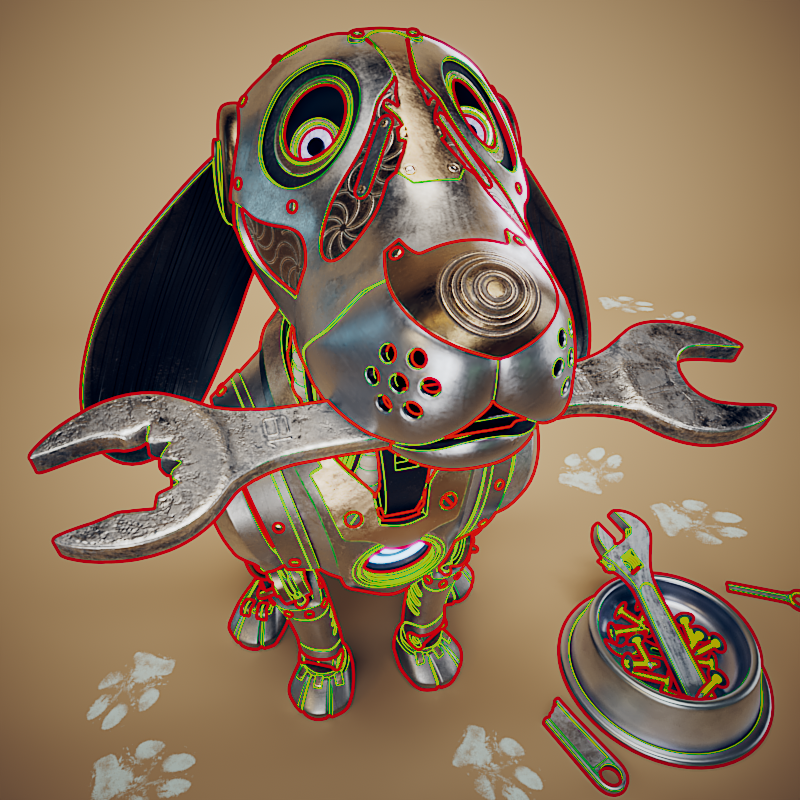This tutorial shows you how to add a V-Ray Toon Effect to a scene. For instructions on how to use the toon effect in Solaris, see the How to add V-Ray Toon Effect in Solaris tutorial.
Overview
The V-Ray Toon Effect offers a quick and easy way to add cartoonish outlines to the objects in your scene. It works best when combined with the V-Ray Toon material.
The scene used here contains a robot dog geometry. The lighting is done entirely with V-Ray lights – a combination of several rectangle lights and a dome light. The closeup shot is rendered with a V-Ray Physical Camera set to Physical Exposure.
To download sample scene files: Download Test Scene
Want to follow along but don’t have a license?: Download Free Trial
Workflow
- In ||out|| network, create a V-Ray Environment node. Dive inside it.
- Create a V-Ray Toon Effect node.
- Add the Environment node to the Renderer ROP.
- Configure the Toon effect parameters to your liking.
Here, the Silhouette Color is set to red or RGB (1, 0, 0) and the Silhouette Width is 3 for better visual representation of the effect.
The Interior Edges are enabled and their Color is set to green or RGB (0, 1, 0). The Width of the interior edges is 1.5.
The rest of the parameters are kept at their default values. - Render.
- For best results add V-Ray Toon materials to all geometry in the scene. Set the material parameters to your liking.
- Let's also change the Silhouette Color and the Interior Edges Color.
Here, the Silhouette Color is set to EGB (1, 1, 1) and the Interior Edges Color is set to RGB (0.122, 0.122, 0.122). - Render.






